Mastering the Art of Wood Turning: A Beginner's Guide
Welcome to the fascinating world of wood turning, where creativity meets craftsmanship! If you’ve ever wanted to transform a simple piece of wood into a stunning work of art, then you’re in the right place. This guide provides essential insights and techniques for beginners interested in wood turning. You’ll discover the tools you need, safety tips to keep you protected, and project ideas that will inspire your creative journey in woodworking. Whether you're looking to create a beautiful bowl, a unique spindle, or decorative items, mastering wood turning can be incredibly rewarding.
So, what exactly is wood turning? At its core, it involves shaping wood on a lathe, which spins the wood while you use various tools to carve it into the desired shape. Imagine a potter at their wheel, but instead of clay, you’re working with wood. The beauty of wood turning lies in the transformation; a rough, unassuming log can become a polished, elegant piece of art in just a few hours. It's a craft that combines skill, patience, and a bit of imagination, making it perfect for those who enjoy hands-on projects.
As you delve into this guide, you’ll learn about the essential tools that will become your best friends in this craft. From the lathe itself to chisels and safety gear, understanding what you need is crucial for your success. Additionally, we’ll explore the importance of choosing the right type of wood. Did you know that different woods can behave very differently when turned? Some are easy to work with, while others can be quite challenging. Choosing wisely will set you up for a more enjoyable experience.
Safety is paramount in wood turning. With sharp tools and high-speed machinery, it’s essential to take precautions to protect yourself. We’ll cover the best practices to ensure you stay safe while enjoying this rewarding hobby. Plus, we’ll dive into basic wood turning techniques, helping you master the skills necessary to create beautiful pieces. You’ll learn about spindle turning, bowl turning, and everything in between!
Finally, we’ll discuss the finishing touches that can elevate your projects from good to great. The right finish not only enhances the beauty of your work but also protects it from the elements. We’ll explore various types of finishes and how to apply them effectively, ensuring your creations shine and last for years to come.
Are you ready to embark on this creative journey? Let’s get started and unlock the secrets of wood turning together!
- What is the best wood for beginners? Softwoods like pine or poplar are great for beginners due to their ease of workability.
- Do I need a lot of tools to start wood turning? No, you can start with just a few essential tools and gradually expand your collection as you gain experience.
- How can I ensure safety while wood turning? Always wear protective gear, including goggles and a dust mask, and ensure your workspace is clean and organized.
- Can I turn any type of wood? While most woods can be turned, some are more suitable than others. Researching wood types will help you choose wisely.
- What can I make with wood turning? You can create a variety of items, including bowls, vases, candle holders, and decorative pieces.
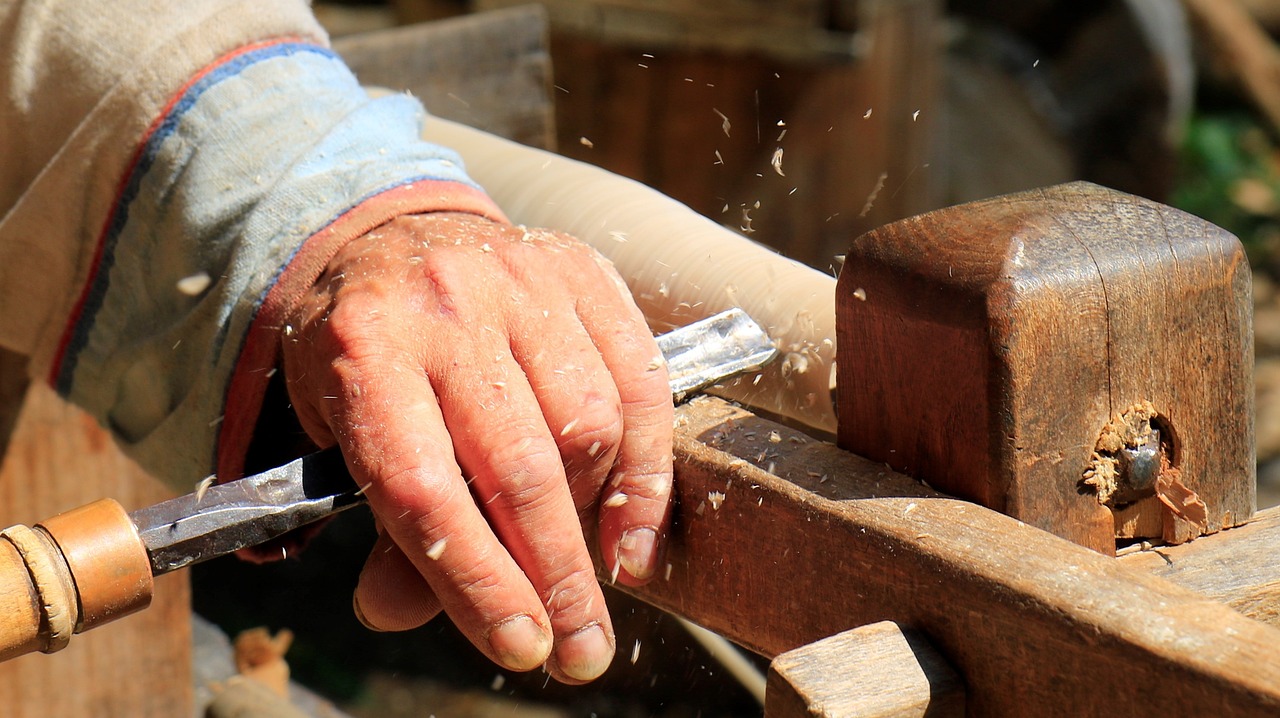
Essential Tools for Wood Turning
When it comes to wood turning, having the right tools is absolutely essential for success. Imagine trying to paint a masterpiece without brushes or a canvas—it's a similar scenario in the world of woodworking. The tools you choose not only affect the quality of your work but also your overall experience. Let's dive into the must-have tools that every beginner should consider as they embark on this exciting journey.
At the heart of wood turning is the lathe. This incredible machine is where the magic happens, allowing you to shape and carve wood into stunning pieces. When selecting a lathe, look for one that fits your workspace and budget. A good starter lathe should have a variable speed option, as this feature allows for greater control over your projects. Remember, a lathe is an investment in your craft, so choose wisely!
Next up are chisels. These tools are your primary instruments for shaping wood, much like a sculptor uses chisels to carve stone. A basic set of wood turning chisels typically includes:
- Gouges: Perfect for hollowing out and shaping the wood.
- Skew Chisels: Ideal for creating smooth surfaces and fine details.
- Parting Tools: Used for separating pieces of wood and creating clean edges.
Having a variety of chisels will give you the flexibility to tackle different projects with ease. Make sure you invest in quality tools, as they will last longer and provide better results.
Safety equipment is another crucial aspect of wood turning. You wouldn't dive into the ocean without a life jacket, right? Similarly, you should never start wood turning without proper safety gear. Essential safety equipment includes:
- Safety Glasses: Protect your eyes from flying debris.
- Dust Mask: Keep your lungs safe from fine wood dust.
- Ear Protection: Lathes can be loud, so protect your hearing!
Investing in these safety tools is just as important as your turning tools. They ensure that you can enjoy your woodworking journey without unnecessary risks.
In addition to these primary tools, you may also want to consider other accessories that can enhance your wood turning experience. A tool rest is essential for stabilizing your chisels and ensuring precision. A good set of calipers can help you measure your work accurately, while a workbench provides a sturdy surface for your projects. All of these tools will contribute to a smoother, more enjoyable turning process.
To sum it up, starting your wood turning journey requires a mix of essential tools that will facilitate your creativity and ensure safety. By investing in a quality lathe, a variety of chisels, and necessary safety equipment, you're setting yourself up for success. Remember, the right tools can make all the difference, transforming your ideas into beautiful, tangible creations.
Q: What is the most important tool for a beginner in wood turning?
A: The lathe is the most crucial tool for wood turning, as it is where the actual shaping of the wood takes place.
Q: How do I maintain my wood turning tools?
A: Regularly sharpen your chisels and keep them clean. Store them properly to avoid damage and ensure longevity.
Q: Can I use any type of wood for turning?
A: While many types of wood can be used, beginners are often advised to start with softer woods like pine or poplar, which are easier to work with.
Q: Is wood turning a safe hobby?
A: Yes, as long as you follow proper safety precautions and use the right protective gear, wood turning can be a safe and enjoyable hobby.
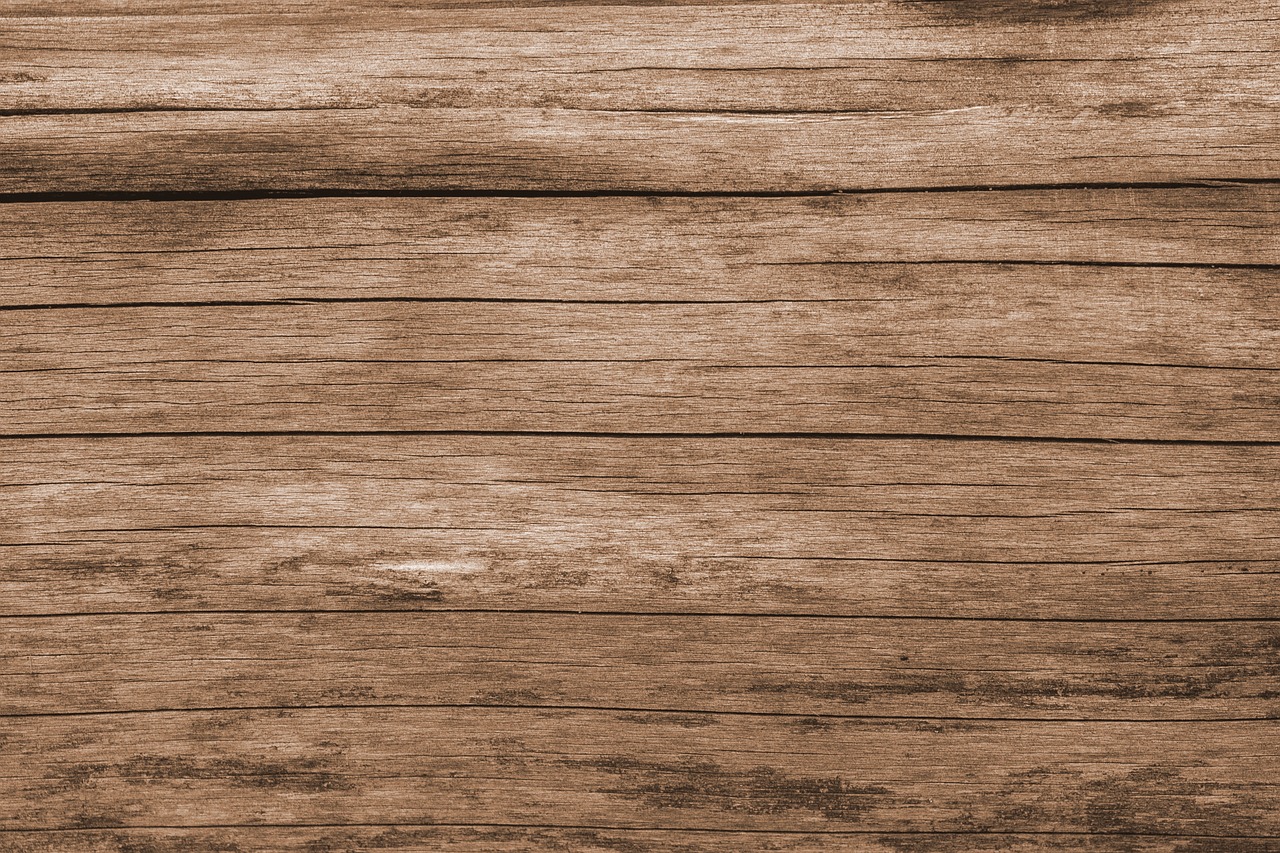
Choosing the Right Wood
When it comes to wood turning, selecting the right type of wood is like choosing the perfect canvas for a painter. The wood you choose can significantly impact the outcome of your project, influencing not only the aesthetics but also the workability and durability of your finished piece. So, how do you make the best choice? Let's dive into the fascinating world of wood species and discover what makes each one unique.
First off, it’s essential to understand that different woods possess distinct characteristics. Some woods are dense and hard, while others are softer and more forgiving. For beginners, it’s crucial to start with wood that is easy to work with. Softwoods like pine or cedar are often recommended for those just starting out because they are less challenging to cut and shape. On the other hand, hardwoods, such as oak or maple, can provide stunning results but may require more skill and experience.
Here’s a quick comparison to help you understand the differences:
| Wood Type | Density | Workability | Common Uses |
|---|---|---|---|
| Softwood | Low to Medium | Easy | Spindles, Toys, Decorative Items |
| Hardwood | Medium to High | Moderate to Difficult | Bowls, Furniture, Fine Crafts |
Now, let’s talk about some popular wood species that are particularly suitable for beginners. Woods like birch, maple, and cherry are fantastic choices because they are not only beautiful but also relatively easy to turn. Birch, for instance, has a fine grain that can produce a smooth finish, making it a favorite among woodturners. Maple, on the other hand, is known for its durability and resistance to wear, which is why it's often used in creating functional items.
Another important aspect to consider is how the wood is prepared before you start turning. Properly dried wood is crucial to prevent cracking and warping during the turning process. If you’re using freshly cut wood, it’s advisable to let it dry for several months. This might seem like a hassle, but trust me, the end result will be worth the wait!
In addition to the type of wood, think about the grain pattern and color. Some woods have stunning natural patterns that can enhance your project’s visual appeal. For example, walnut has a rich, dark hue with beautiful grain that can elevate any piece to a work of art. Choosing the right wood is not just about functionality; it’s also about expressing your creativity and personal style.
So, before you rush out to buy your first piece of wood, take a moment to consider what type of project you want to create. Are you looking to make something practical like a bowl or a decorative piece? This decision will guide you in selecting the appropriate wood species. Remember, every piece of wood has its own story, and as a woodturner, you have the opportunity to bring that story to life!
Q: What is the best wood for beginners?
A: Softwoods like pine and cedar are great for beginners due to their ease of workability. Hardwoods like maple and birch are also good options as they provide beautiful finishes.
Q: How do I prepare wood for turning?
A: Proper preparation includes drying the wood to prevent warping and cracking. Freshly cut wood should be dried for several months before turning.
Q: Can I use reclaimed wood for turning?
A: Absolutely! Reclaimed wood can add character to your projects, but make sure it’s properly dried and free of contaminants.

Hardwoods vs. Softwoods
When it comes to wood turning, understanding the difference between hardwoods and softwoods is essential. Each type of wood brings its own unique properties to the table, influencing not just the aesthetics of your project but also the ease of working with the material. Hardwoods, which come from deciduous trees, are generally denser and more durable. They can be a bit challenging to turn but yield stunning results that can last a lifetime. Popular hardwoods include oak, maple, and cherry, known for their rich colors and beautiful grain patterns.
On the other hand, softwoods are derived from coniferous trees and are typically lighter and easier to work with. Woods like pine, cedar, and spruce fall into this category. While softwoods may not always have the same level of durability as hardwoods, they are often more forgiving for beginners, allowing for smoother cuts and quicker project completion. This is particularly advantageous when you're just starting out and building your confidence in wood turning.
To help you better understand the differences, here's a brief comparison:
| Property | Hardwoods | Softwoods |
|---|---|---|
| Density | Higher density, more durable | Lower density, lighter |
| Grain Patterns | Rich and varied | Generally straight, less complex |
| Workability | More challenging, requires sharper tools | Easier to cut and shape |
| Common Uses | Furniture, cabinetry, fine crafts | Construction, paper products, less detailed items |
Ultimately, the choice between hardwoods and softwoods will depend on your specific project goals and your level of experience. If you're looking for something that showcases intricate details and can stand the test of time, hardwoods are your best bet. However, if you're eager to dive into wood turning with more manageable materials, softwoods will help you build your skills without overwhelming you. Remember, each type of wood has its own personality, and part of the joy of wood turning is discovering how to bring that personality to life in your projects!
- What is the best wood for beginners? Softwoods like pine or poplar are usually recommended for beginners due to their ease of workability.
- Can I use hardwoods for small projects? Absolutely! Hardwoods can be used for small projects, but they may require more skill and patience.
- How do I choose the right wood for my project? Consider the final look you desire, the tools you have, and your skill level when selecting wood.

Popular Wood Species for Beginners
When starting your journey in wood turning, selecting the right wood species is crucial for both your success and enjoyment. Certain woods are particularly forgiving and easier to work with, making them ideal for beginners. Among the most popular choices are maple, birch, and cherry. Each of these species offers unique characteristics that can enhance your wood turning experience.
Maple is a fantastic option for beginners due to its fine grain and light color, which allows for a smooth finish. It’s relatively hard, yet it turns well, making it perfect for creating detailed pieces. Plus, its versatility means you can use it for a variety of projects, from bowls to decorative items.
Birch, on the other hand, is another excellent choice. It’s known for its strength and durability, which can help you produce long-lasting projects. Birch has a pale color and a subtle grain pattern, giving your creations a clean and polished look. It’s also quite forgiving, allowing for easier corrections if you make a mistake while turning.
Cherry is a favorite among woodworkers for its rich color and smooth texture. While it’s a bit softer than maple and birch, it still holds up well during the turning process. Over time, cherry wood develops a beautiful patina, adding character to your projects. It’s perfect for making items that you want to showcase, such as bowls or vases.
Here’s a quick comparison of these popular wood species:
| Wood Species | Grain | Color | Difficulty Level |
|---|---|---|---|
| Maple | Fine | Light | Easy |
| Birch | Subtle | Pale | Easy |
| Cherry | Smooth | Rich | Medium |
In addition to these woods, you might also consider poplar and pine. Poplar is known for its ease of use and affordability, while pine, being a softwood, is great for practice projects. These woods may not have the same aesthetic appeal as hardwoods, but they can be excellent for honing your skills without breaking the bank.
Ultimately, the choice of wood can significantly affect your wood turning projects. As you experiment with different species, you’ll develop a better understanding of how each type behaves and which ones you prefer working with. So, gear up, grab your lathe, and let the wood turning adventure begin!
Q: What is the best wood for beginners in wood turning?
A: The best woods for beginners include maple, birch, and cherry due to their workability and forgiving nature.
Q: Can I use softwoods for wood turning?
A: Yes, softwoods like pine can be used, especially for practice projects. However, hardwoods typically yield better results for finished pieces.
Q: How do I prepare wood for turning?
A: Proper preparation involves cutting, drying, and storing your wood to ensure it’s ready for turning. Make sure to remove any bark and check for defects.
Q: What safety equipment do I need for wood turning?
A: Essential safety equipment includes safety glasses, a dust mask, and ear protection to keep you safe from flying debris and noise.
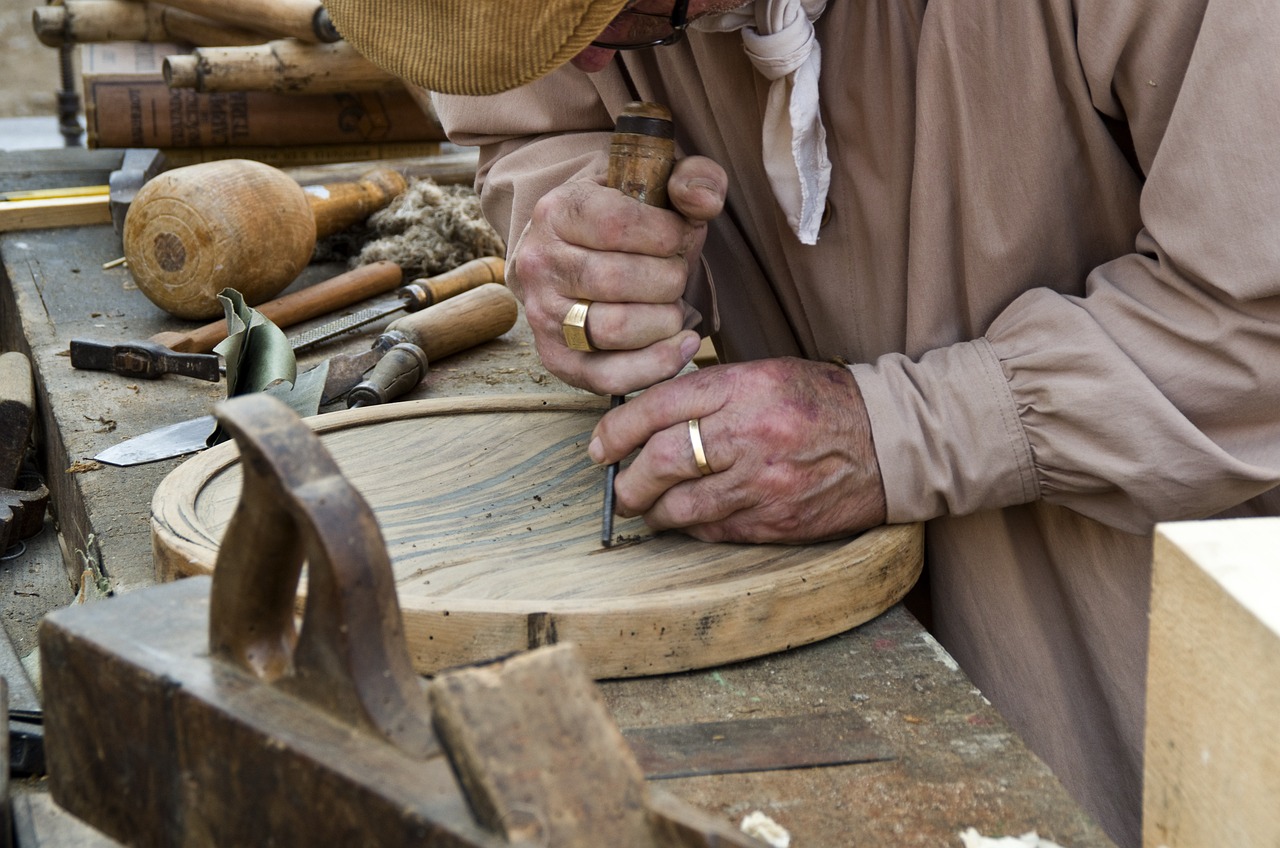
Wood Preparation Techniques
Proper wood preparation is the backbone of successful wood turning. Imagine trying to sculpt a masterpiece from a block of stone that hasn't been chiseled down; it just wouldn't work! Similarly, starting with well-prepared wood can make all the difference in your turning projects. The first step is selecting the right piece of wood. Look for logs that are free from significant knots or cracks, as these imperfections can lead to challenges during the turning process.
Once you've selected your wood, the next step is cutting it to size. This involves trimming the logs into manageable pieces that fit comfortably on your lathe. A good rule of thumb is to cut the wood slightly larger than your desired final dimensions. This gives you some wiggle room to work with as you shape the piece. Be sure to use a sharp chainsaw or bandsaw for clean cuts, as rough edges can complicate the turning process.
After cutting, drying your wood is crucial. Wet wood can warp or crack as it dries, leading to unpredictable results. To avoid this, consider air drying your wood for several weeks or even months, depending on its thickness. If you're eager to get started, a kiln can expedite the drying process, although it's a bit more of an investment. Here's a quick overview of drying methods:
| Drying Method | Pros | Cons |
|---|---|---|
| Air Drying | Cost-effective, simple | Time-consuming, risk of warping |
| Kiln Drying | Faster, controlled environment | More expensive, requires equipment |
Once your wood is dry, it's time to store it properly. Storing wood in a cool, dry place helps prevent moisture absorption, which can lead to warping and cracking. Stacking the wood with spacers can allow for airflow, further enhancing the drying process and ensuring that your wood remains in optimal condition.
Finally, before you start turning, you should prepare the wood's surface. This involves sanding the wood to remove any rough spots and ensure a smooth finish. Start with a coarse grit sandpaper and gradually move to finer grits for the best results. A well-prepared surface will not only make your turning easier but will also enhance the final appearance of your project.
In summary, the key steps in wood preparation include:
- Selecting high-quality wood
- Cutting it to size
- Drying it properly
- Storing it correctly
- Sanding the surface
By following these techniques, you'll set yourself up for success in your wood turning endeavors, allowing your creativity to shine through in every piece you create.
Q: What is the best type of wood for beginners?
A: Softwoods like pine and cedar are great for beginners due to their workability and forgiving nature.
Q: How long should I let my wood dry?
A: It depends on the thickness; generally, air drying can take several weeks to months, while kiln drying is faster.
Q: Do I need special tools for wood preparation?
A: Basic tools like a chainsaw, bandsaw, and sandpaper are essential for preparing wood effectively.
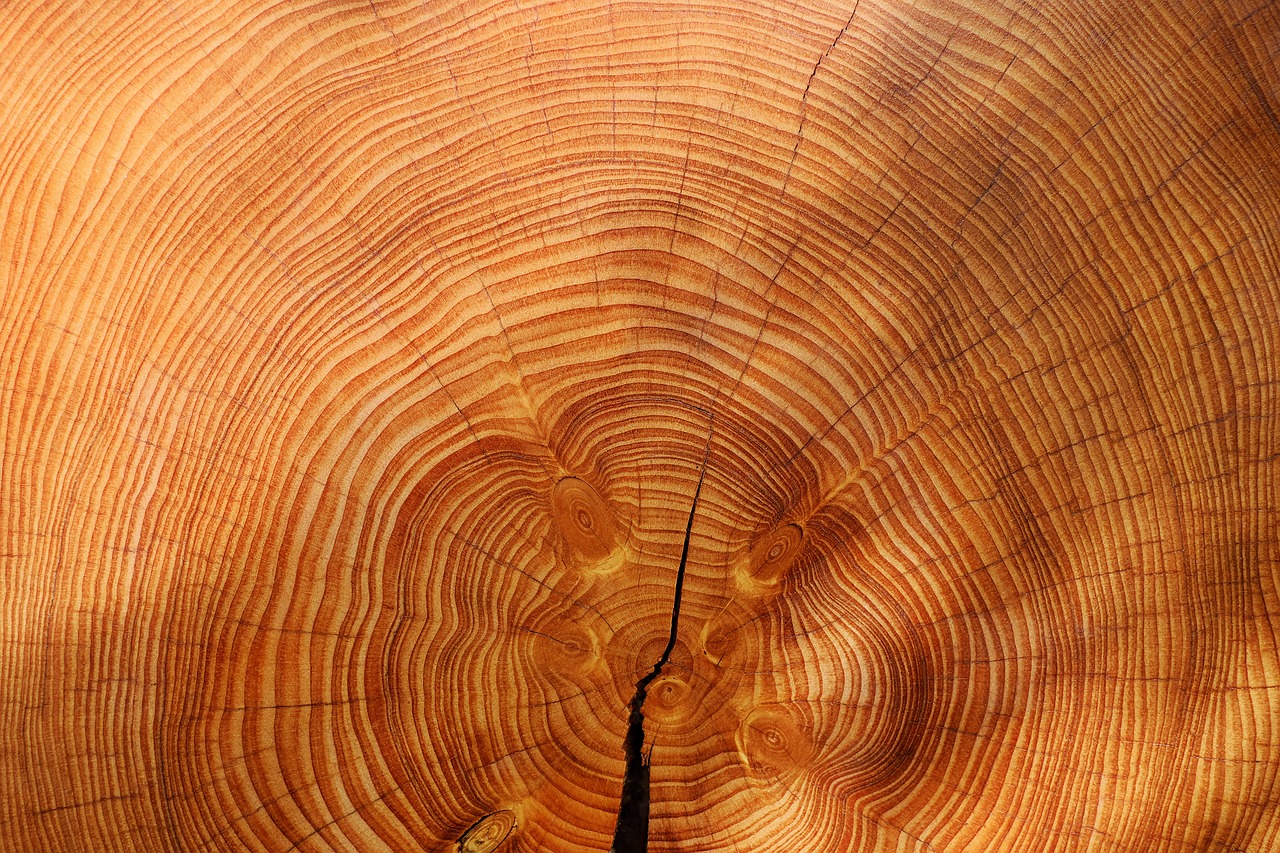
Safety Precautions in Wood Turning
When diving into the world of wood turning, safety should be your *number one priority*. The thrill of shaping wood into beautiful pieces can be exhilarating, but it comes with its own set of risks. Understanding and implementing safety precautions can help you avoid accidents and ensure a smooth, enjoyable experience. So, what can you do to keep yourself safe while turning wood?
First and foremost, **wearing the right personal protective equipment (PPE)** is essential. This includes safety goggles to protect your eyes from flying debris, a dust mask to filter out harmful particles, and hearing protection to guard against the loud noise of the lathe. Think of your PPE as your armor; without it, you’re exposed to potential dangers that can easily be avoided.
Another critical aspect of safety is maintaining a clean and organized workspace. A cluttered area can lead to accidents, so make it a habit to keep your tools and materials neatly arranged. Before you start turning, take a moment to check your surroundings. Are there any loose items on the floor that could trip you? Is your lathe securely anchored? Addressing these issues beforehand can save you from a nasty spill or an injury.
Furthermore, it's vital to **understand the operation of your tools**. Each tool has its specific function and quirks, so take the time to read the manufacturer's instructions and watch tutorials if necessary. Never attempt to use a tool you’re unfamiliar with; it’s like trying to drive a car without knowing how to operate the steering wheel. If you’re unsure, seek guidance from experienced woodturners or join a local workshop.
In addition, always remember to **secure your workpiece properly** on the lathe. An improperly mounted piece can fly off at high speeds, posing a serious risk. Make sure that the wood is tightly fastened and that you’re using the right chuck or faceplate for the job. If you notice any wobbling or instability, stop the lathe immediately and make the necessary adjustments.
Lastly, keep your hands and fingers at a safe distance from the cutting tools. It's easy to get caught up in the excitement of turning and forget about your safety. Always keep your hands behind the tool rest and use push sticks or other aids to guide your workpiece when necessary. Remember, your hands are irreplaceable, so treat them with care!
By following these safety precautions, you can enjoy the art of wood turning while minimizing risks. It's all about creating a safe environment where your creativity can flourish. So gear up, stay alert, and let your imagination run wild with wood!
Now that we've covered the essential safety precautions, you might have some questions lingering in your mind. Here are a few frequently asked questions about wood turning safety:
- What should I do if I feel uncomfortable using a tool?
If you ever feel unsure about using a tool, it's best to stop and seek help from someone more experienced. Don't hesitate to ask questions or get guidance. - How often should I replace my safety gear?
Regularly inspect your PPE for any signs of wear and tear. Replace items like goggles or masks if they become damaged or ineffective. - Is it safe to work alone when wood turning?
While many woodturners work alone, it's safer to have someone nearby, especially if you're trying a new technique or using a large piece of wood.
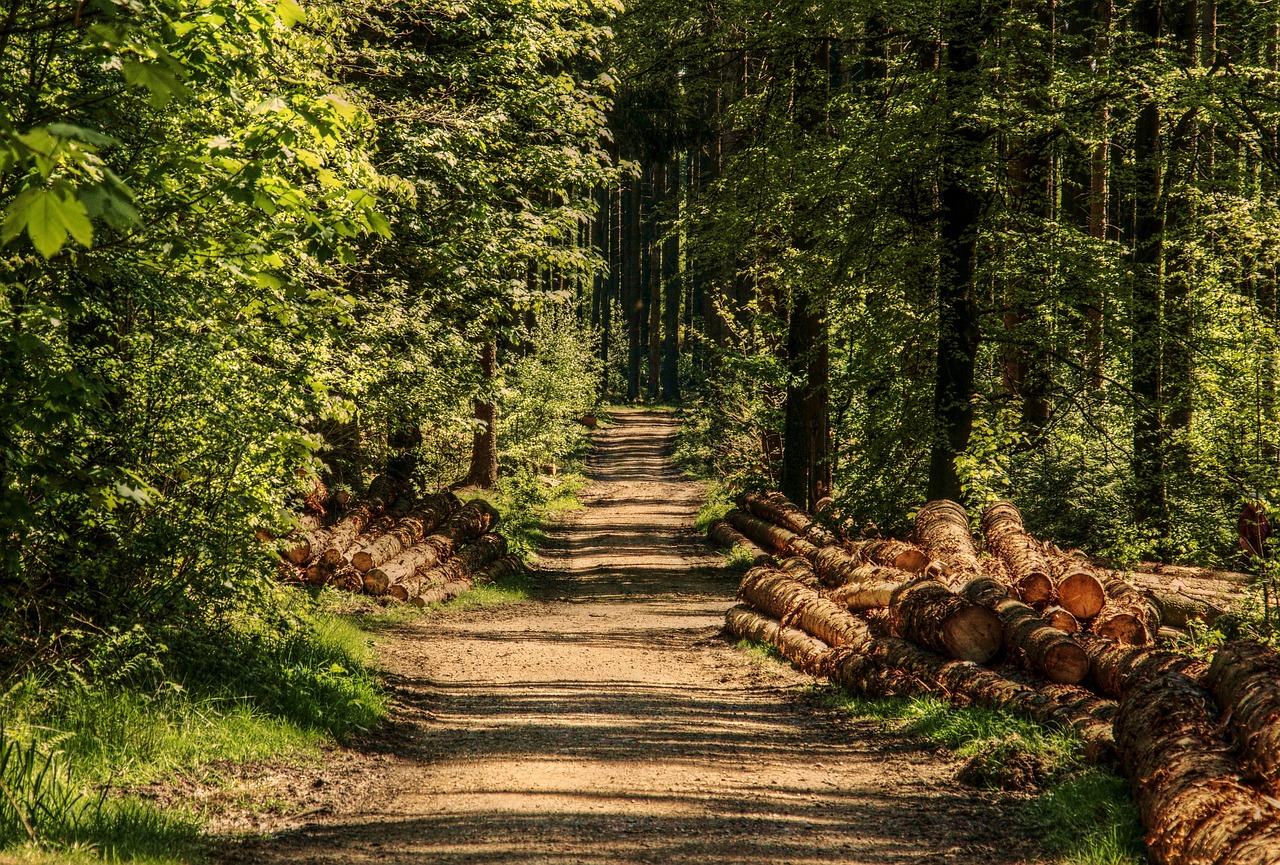
Basic Wood Turning Techniques
Wood turning is an art that marries creativity with skill, and mastering the basic techniques is essential for any aspiring woodturner. Whether you're crafting a simple spindle or a beautiful bowl, understanding the foundational techniques will set you on the path to success. Let's dive into the core methods that every beginner should become familiar with, ensuring your projects not only look great but are also structurally sound.
One of the first techniques to grasp is spindle turning. This involves creating cylindrical shapes by rotating the wood on a lathe while shaping it with chisels. Imagine the thrill of transforming a rough piece of wood into a sleek, elegant spindle that could be used for furniture or decorative pieces. The key to spindle turning lies in your grip and stance. Ensure your body is positioned securely, with your tools held firmly but not too tightly. This balance will allow you to maintain control as you shape the wood.
Next up is bowl turning, a technique that many woodturners find particularly rewarding. The process involves hollowing out a block of wood to create a bowl. It’s like sculpting but with a twist—literally! As the lathe spins the wood, you’ll use specialized tools, such as bowl gouges and scrapers, to remove material and create the desired shape. The satisfaction of seeing your bowl take form is unparalleled. To get started, choose a piece of wood that is at least 6 inches in diameter; this size provides enough material to work with while still being manageable for beginners.
As you embark on your wood turning journey, remember that practice makes perfect. Start with simple projects to build your confidence. Consider creating items such as pen holders, candle holders, or even simple decorative bowls. These projects allow you to experiment with different techniques without overwhelming yourself. Each piece you create will teach you something new, helping you refine your skills and develop your unique style.
Don't forget about the importance of tool maintenance. Sharp tools are essential for effective wood turning. Dull tools can lead to poor results and increase the risk of accidents. Regularly honing and sharpening your chisels will not only make your work easier but also enhance the quality of your finished pieces. Here’s a quick table to remind you of the essential tools and their maintenance tips:
| Tool | Maintenance Tips |
|---|---|
| Lathe | Keep it clean and lubricate moving parts regularly. |
| Chisels | Sharpen after every few projects; use a honing stone. |
| Sandpaper | Replace when worn; use various grits for best results. |
As you work on your projects, always keep safety at the forefront of your mind. Wear appropriate protective gear, such as goggles and a dust mask, to shield yourself from debris and dust. Additionally, maintain a clean workspace to prevent accidents. The more you practice these techniques, the more comfortable you’ll become with the tools and processes involved in wood turning.
In conclusion, mastering the basic wood turning techniques is a journey filled with creativity, patience, and practice. By focusing on spindle and bowl turning, along with maintaining your tools and adhering to safety practices, you’ll be well on your way to creating stunning wooden pieces that reflect your personal style and craftsmanship. Remember, every expert was once a beginner, so embrace the learning process and enjoy each moment spent at the lathe!

Spindle Turning Techniques
When diving into the world of wood turning, spindle turning is often the first technique that captivates beginners. It's like the gateway to a magical realm where you can transform a simple piece of wood into a stunning cylindrical masterpiece. Imagine the thrill of watching a raw piece of timber morph into a smooth, elegant spindle right before your eyes! But before you jump in, it’s essential to grasp the fundamentals of this technique.
At its core, spindle turning involves shaping wood along its length, which is fundamentally different from bowl turning, where you work on the end grain. The first thing you need is a lathe, which is the heart of your wood turning setup. A lathe spins the wood while you use various tools to shape it. As a beginner, you might feel overwhelmed by the array of tools available, but don't worry! Start with a few essential ones: a roughing gouge, a spindle gouge, and a parting tool. These will help you achieve a variety of shapes and finishes.
Now, let’s talk about technique. When you first approach the lathe, ensure that your wood is securely mounted. This is vital for both safety and achieving a smooth finish. As the wood spins, use your roughing gouge to remove the bulk of the material. Think of this as sculpting a block of clay; you want to eliminate the excess before fine-tuning your piece. Once you have a basic shape, switch to the spindle gouge to refine your design. This tool allows for more intricate cuts and is perfect for adding details.
One of the key aspects of spindle turning is maintaining the right tool angle. Holding your tools at the correct angle not only helps achieve a smoother cut but also reduces the chance of catching, which can be dangerous. A good rule of thumb is to keep the bevel of the tool against the wood while applying a slight downward pressure. This technique will help you glide through the wood effortlessly, creating beautiful curves and lines. Remember, practice makes perfect, so don’t be discouraged by initial challenges!
As you become more comfortable with spindle turning, you can start experimenting with different designs. Here are a few popular projects that are great for beginners:
- Candle holders: Simple yet elegant, perfect for honing your skills.
- Spindles for furniture: A practical way to apply your skills in real-world projects.
- Wooden toys: Fun and functional, these projects allow for creativity.
Finally, don’t forget about finishing your spindle pieces. After you’ve achieved the desired shape, sanding is crucial. Start with a coarser grit and gradually move to finer grits for a smooth, polished finish. Once sanded, consider applying a finish such as oil or lacquer to enhance the wood’s natural beauty and protect it from wear.
In conclusion, spindle turning is an exciting and rewarding skill that lays the foundation for many wood turning projects. By mastering the basic techniques and tools, you’ll be well on your way to creating stunning wooden pieces that showcase your creativity and craftsmanship.
Q: What is the best wood for spindle turning?
A: Softwoods like pine or poplar are excellent choices for beginners due to their ease of cutting and shaping.
Q: How do I prevent catching while turning?
A: Maintaining the correct tool angle and using sharp tools can significantly reduce the risk of catching.
Q: Can I use a regular lathe for spindle turning?
A: Yes, any lathe that can accommodate the size of your wood piece will work for spindle turning.
Q: How often should I sharpen my tools?
A: It’s a good practice to check your tools frequently while working. If you notice resistance or rough cuts, it’s time to sharpen.

Bowl Turning Techniques
Bowl turning is a captivating aspect of woodworking that allows you to create stunning, functional pieces from a simple block of wood. Whether you're a novice or have some experience under your belt, mastering the art of bowl turning can be incredibly rewarding. The first step in this journey is understanding the tools you'll need. A lathe is, of course, the centerpiece of your setup, but you'll also require specific tools like gouges and scrapers to shape your bowl effectively. Each tool has its own purpose, and knowing how to use them will significantly enhance your results.
Before you even start turning, it's crucial to prepare your wood properly. Start with a well-seasoned blank, ideally a piece that’s round and free of cracks. The size of your blank will depend on the size of the bowl you wish to create. A common choice for beginners is a blank that is around 6 to 8 inches in diameter. This size is manageable and allows for a variety of bowl shapes. Once you have your blank, mount it securely onto the lathe, ensuring it is balanced to prevent any wobbling during the turning process.
When it comes to the actual turning, the technique is all about control and finesse. Begin with the roughing gouge to shape the outside of the bowl. As you work, keep the tool parallel to the lathe bed and maintain a steady hand. This is where practice makes perfect; don’t be discouraged if your first few attempts aren’t flawless. Once the outside is shaped, switch to a bowl gouge. This tool allows you to create the interior of the bowl with a smooth finish. Remember to keep your body positioned correctly and your elbows close to your sides for better control.
As you near the end of your turning, it's essential to pay attention to the wall thickness of the bowl. A good rule of thumb is to aim for a thickness of about 1/4 inch. This ensures that your bowl is sturdy yet elegant. If you notice any vibrations or unevenness, take a step back and adjust your technique. It’s all about finding that sweet spot where the tool meets the wood. And don’t forget to wear your safety gear—goggles and a face shield are a must!
Once you’ve finished shaping your bowl, it’s time to sand and finish. Start with a coarse grit and gradually move to finer grits to achieve a smooth surface. Sanding is often overlooked, but it’s a critical step that can make or break your final product. After sanding, consider applying a finish to enhance the wood's natural beauty. Options like mineral oil, tung oil, or even a simple beeswax finish can add a protective layer while highlighting the unique grain of your wood.
In conclusion, bowl turning is not just about creating a wooden vessel; it’s about the entire experience—from selecting the right wood to mastering your tools and techniques. With patience and practice, you can create beautiful bowls that not only serve a purpose but also showcase your craftsmanship. So, gather your tools, choose your wood, and let your creativity flow!
- What type of wood is best for bowl turning? Softwoods like pine are great for beginners, but hardwoods like maple and cherry offer beautiful finishes.
- Do I need a specific lathe for bowl turning? While any lathe can be used, a dedicated bowl lathe with a larger swing capacity is ideal for bigger projects.
- How do I prevent my bowl from cracking? Proper drying and sealing of the wood can help minimize cracking during and after the turning process.
- What finishes are recommended for wooden bowls? Food-safe finishes like mineral oil or beeswax are excellent choices for bowls that will hold food.
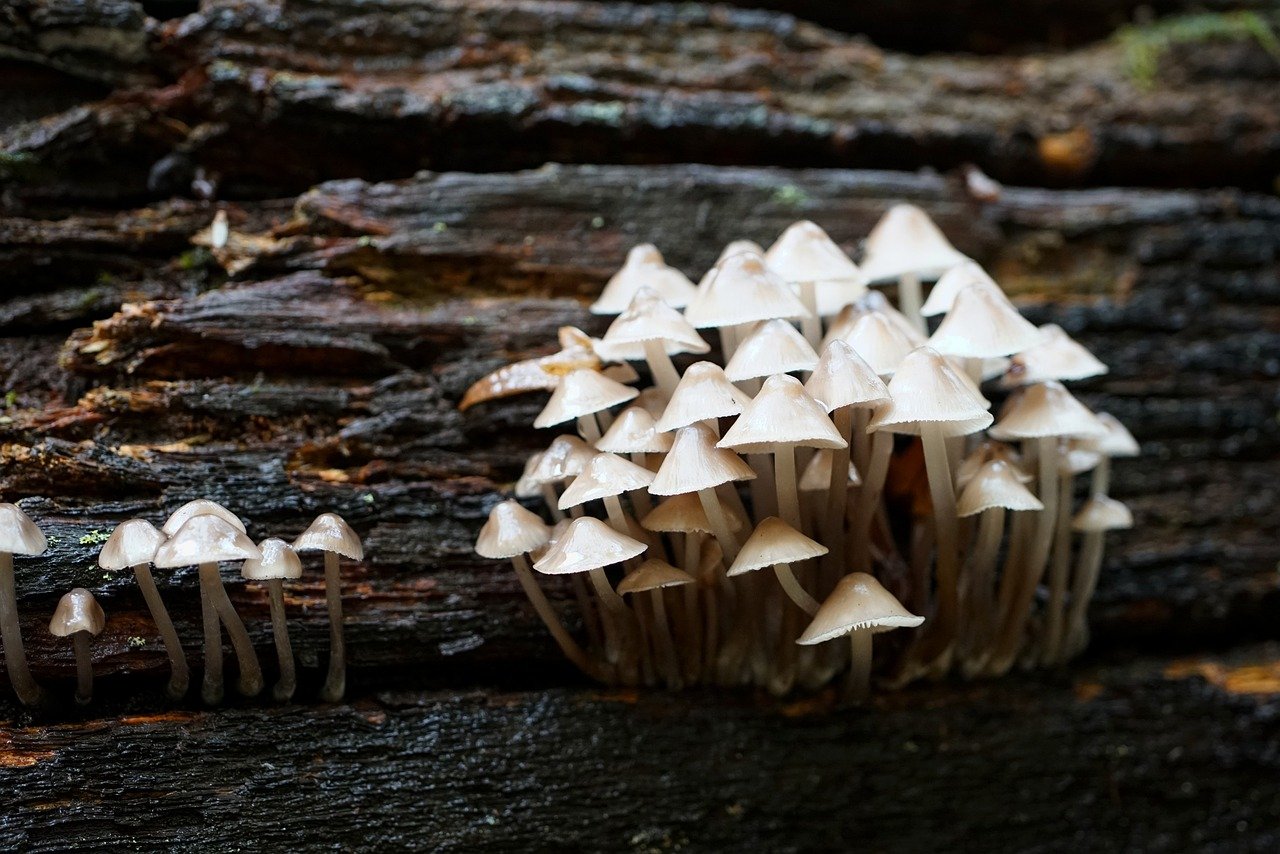
Finishing Your Wood Projects
Finishing is not just an afterthought in wood turning; it's the cherry on top of your beautifully crafted projects. Think of it as the final brush stroke on a masterpiece. It enhances the natural beauty of the wood, protects it from the elements, and gives your piece a professional touch. Whether you’re turning a simple bowl or an intricate decorative item, the finishing process is crucial for ensuring your work stands the test of time. So, let’s dive into the world of finishes!
There are several types of finishes available, each with its unique properties and applications. Some common options include oils, lacquers, and waxes. Oils, such as tung or linseed oil, penetrate deeply into the wood, providing a durable finish that enhances the grain. Lacquers, on the other hand, offer a hard, glossy surface that dries quickly, making them ideal for projects that require a polished look. Waxes provide a soft sheen and are often used as a topcoat over other finishes, giving your project a smooth, tactile feel.
When choosing a finish, consider not only the look you want to achieve but also the function of the item. For example, if you’re creating a bowl that will hold food, it’s essential to use food-safe finishes. Always read labels and do your research to ensure that the products you choose are appropriate for your specific project.
Applying finishes effectively is an art in itself. Preparation is key—start by sanding your project to a smooth finish, removing any imperfections that could mar the final look. Once your piece is sanded, clean it thoroughly to remove dust particles. This step is crucial because any dust left on the surface can ruin the finish, leading to a rough texture or uneven application.
Here are some best practices for applying finishes:
- Use the Right Tools: Brushes, rags, or spray applicators can all be used depending on the finish type. Each tool offers different results, so choose wisely!
- Apply Thin Coats: It’s better to apply multiple thin coats rather than a single thick one. This approach allows for better adhesion and a smoother finish.
- Follow the Manufacturer's Instructions: Different finishes have different drying times and application methods. Always refer to the product guidelines for the best results.
Once you’ve applied your finish, allow it to cure fully. This step is often overlooked, but patience is vital. Rushing this process can lead to smudges or damage to the finish. After curing, you can lightly sand between coats to achieve an ultra-smooth surface, ensuring that your final product looks stunning.
In conclusion, the finishing process in wood turning is where your hard work truly shines. By selecting the right finish and applying it with care, you can elevate your woodworking projects from good to great. Remember, finishing is not just about aesthetics; it’s about preserving your creations for years to come. Now, let’s address some frequently asked questions to help you further on your wood turning journey!
Q: What is the best finish for a wooden bowl?
A: For wooden bowls, particularly those used for food, a food-safe finish like mineral oil or a blend of beeswax and mineral oil is ideal. They provide a safe, moisture-resistant barrier without altering the wood's natural beauty.
Q: How many coats of finish should I apply?
A: Generally, applying 2-3 thin coats of finish is recommended for a well-protected and polished look. Always allow each coat to dry thoroughly before applying the next.
Q: Can I use a spray finish on my wood projects?
A: Yes! Spray finishes can provide a smooth, even coat and are often easier to apply for larger projects. Just be sure to use them in a well-ventilated area and follow safety precautions.

Types of Finishes
When it comes to wood turning, the finishing process is where your project truly comes to life. It’s not just about making the wood look good; it’s about protecting it and enhancing its natural beauty. There are various types of finishes you can choose from, each with its own unique properties and applications. Understanding these finishes is essential for every woodturner, especially beginners who want to achieve professional-looking results.
First off, let’s talk about oils. Oils are a popular choice for many woodturners because they penetrate deep into the wood, providing a rich, warm glow that highlights the grain. They are relatively easy to apply and can be built up to achieve the desired sheen. Common types of oils include linseed oil, tung oil, and danish oil. Each of these oils has its own drying time and finish characteristics, so it’s worth experimenting to see which one you prefer for your projects.
Next up, we have lacquers. Lacquers are a fast-drying finish that provides a hard, protective coating. They are great for achieving a high gloss and can be applied in multiple layers for a thicker finish. However, they can be a bit tricky to work with, especially for beginners, as they require proper ventilation and safety precautions due to their strong fumes. If you’re looking for durability and a sleek finish, lacquers might be your go-to option.
Waxes are another finishing option that adds a beautiful luster to your wood projects. They are often used as a topcoat over oils or lacquers for added protection. The application is simple: just rub the wax onto the surface, let it sit for a bit, and then buff it off. However, keep in mind that while wax can enhance the appearance, it doesn’t provide as much protection as oils or lacquers. It’s perfect for items that won’t see heavy use.
To help you visualize the differences between these finishes, here’s a simple comparison table:
| Type of Finish | Application Ease | Durability | Sheen Level |
|---|---|---|---|
| Oils | Easy | Moderate | Low to Medium |
| Lacquers | Moderate | High | High |
| Waxes | Very Easy | Low | Medium to High |
Choosing the right finish can be a game-changer for your wood turning projects. It not only affects the aesthetic appeal but also the longevity of your work. Remember, the finish you select should align with the intended use of the item. For instance, if you’re crafting a decorative bowl that won’t see much action, a simple oil finish may suffice. However, for a functional piece like a cutting board, you’ll want something more durable, like a lacquer or a food-safe oil finish.
In conclusion, understanding the various types of finishes available to you is crucial in mastering the art of wood turning. Experimenting with different finishes can lead to stunning results, so don’t hesitate to try out various techniques and products until you find what works best for you. The beauty of wood turning lies not only in the shaping of the wood but also in how you choose to finish it, giving each piece its own unique character.
- What is the best finish for beginners? - Oils are generally recommended for beginners due to their ease of application and forgiving nature.
- Can I mix different types of finishes? - Yes, you can layer finishes, but it's important to ensure compatibility. For example, applying wax over oil is common for added shine.
- How do I know when to reapply finish? - If the wood looks dull, feels rough, or shows signs of wear, it’s time to reapply your finish.

Applying Finishes Effectively
When it comes to wood turning, applying finishes effectively is like putting the cherry on top of a beautifully crafted sundae. It enhances the natural beauty of the wood while providing protection against wear and tear. But how do you ensure that your finish is applied flawlessly? First, preparation is key. Before you even think about reaching for that can of finish, make sure your wood surface is smooth and clean. Use sandpaper to eliminate any rough spots, starting with a coarser grit and gradually moving to a finer one. This will create a surface that not only looks good but also allows the finish to adhere properly.
Once your wood is prepped, it's time to choose the right finish. There are several options available, each with its own unique properties. For instance, oils penetrate deeply into the wood, enhancing its natural grain, while lacquers provide a hard, protective shell. Waxes can add a soft sheen, making your piece feel luxurious to the touch. Understanding the characteristics of each finish will help you make an informed choice based on the desired look and durability.
Now, let's talk about the actual application process. Start by applying a thin coat of your chosen finish using a clean, lint-free cloth or a brush. It's important to work in the direction of the grain to avoid unsightly streaks. If you're using a brush, make sure to use long, even strokes, and don’t overload it with finish. Less is more; you can always add more coats later. After applying the first coat, allow it to dry completely according to the manufacturer's instructions. This can vary from a few hours to a full day.
Once the first coat is dry, inspect your work. You may notice some imperfections or roughness. This is completely normal! Lightly sand the surface with fine-grit sandpaper to smooth it out, then wipe away any dust with a tack cloth. This step is crucial because it helps the subsequent coats adhere better, resulting in a smoother finish.
After sanding, it’s time to apply additional coats. Generally, two to three coats will provide a beautiful, durable finish. Remember to sand lightly between each coat. This process may seem tedious, but the end result is well worth the effort. You’ll be left with a stunning piece that showcases your craftsmanship and the beauty of the wood.
Finally, let your finished piece cure for a few days before using it. This allows the finish to harden fully, ensuring that it withstands the test of time. Remember, patience is a virtue in wood turning, and taking the time to apply your finishes effectively will yield professional-looking results that you can be proud of.
- What is the best finish for wood turning projects? The best finish depends on the type of project and desired look. Oils are great for enhancing grain, while lacquers offer a hard finish.
- How many coats of finish should I apply? Typically, two to three coats are recommended for optimal protection and appearance.
- Can I use the same finish on different types of wood? Yes, most finishes can be used on various wood types, but always test on a small area first.
- How do I clean my brushes after applying finish? Clean brushes with the appropriate solvent for the finish you used, such as mineral spirits for oil-based finishes.
Frequently Asked Questions
- What tools do I need to start wood turning?
To kick off your wood turning journey, you’ll need a few essential tools. The most important is a wood lathe, which is the heart of your setup. You’ll also need a set of chisels, including roughing gouges and spindle gouges, to shape your wood. Don’t forget safety gear like goggles and a dust mask to keep yourself protected while you create!
- How do I choose the right wood for turning?
Selecting the right type of wood can make or break your project. Generally, hardwoods like maple and walnut are great for beginners because they’re more forgiving and easier to work with. On the flip side, softwoods like pine can be a bit tricky due to their tendency to splinter. Always consider the wood's density and grain pattern before diving in!
- What safety precautions should I take while wood turning?
Safety is paramount in wood turning! Always wear safety goggles to protect your eyes from flying debris. A dust mask is also crucial to avoid inhaling wood dust. Make sure your workspace is well-lit and free of clutter. Lastly, keep your hands clear of the lathe while it’s running—this isn’t the time for multitasking!
- What are the basic techniques I should learn as a beginner?
As a newbie, you’ll want to master a couple of fundamental techniques. Start with spindle turning, where you’ll learn to create cylindrical shapes. Then, move on to bowl turning, which involves shaping wood into beautiful bowls. These foundational skills are essential for a variety of projects, so take your time to perfect them!
- How do I finish my wood projects for a professional look?
Finishing your wood projects is the cherry on top! There are several finishes to choose from, including oils, lacquers, and waxes. Each has its unique properties, so pick one that suits your project. When applying finishes, ensure your surface is clean and smooth, and use fine sandpaper for the best results. A little patience goes a long way!
- Can I use any type of wood for turning?
While you can experiment with various types of wood, some are better suited for turning than others. Avoid very dense or resinous woods as they can be tough to work with. Instead, stick to softer hardwoods or well-seasoned softwoods until you gain more experience. Remember, the right wood can make your turning experience much more enjoyable!



















